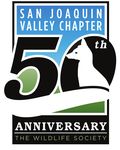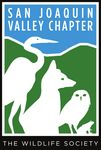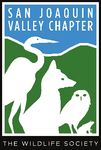FEVER VALLEY - The Wildlife Society
←
→
Page content transcription
If your browser does not render page correctly, please read the page content below
THE VALLEY
FEVER
February 2021
Rainey Reedy’s Candidate Statement
Rainey’s passion for wildlife stems from a very young age, where her common hobbies were pick-
ing up lizards, frogs, and even snails to bring home as pets. She has taken that passion for wildlife and
turned it into a career as a Biology Consultant with McCormick Biological, Inc. She earned her B.S.
in Biology in 2018 from CSU, Bakersfield. She has participated in volunteering opportunities with the
Endangered Species Recovery Program since 2011 and volunteered with the California Living Muse-
um from 2013-2016. Rainey has been an active member of the San Joaquin Valley Chapter for the last
few years and has assisted with the Natural Communities Conference annual photo competition for
the past couple years. Rainey is running for president-elect because she believes it provides wonderful
opportunities for wildlife enthusiasts and wants to assist the organization with growth during one of
the most difficult times for outreach. Rainey believes that most people enjoy wildlife, but they simply
don’t know where to look for opportunities and, as president-elect, hopes to do more for the chapter
to expand our diversity.
Blunt-Nosed Leopard Lizard (Gambelia
sila), San Luis Obispo County, CA. Photo
by Howard Clark.
The Valley Fever—Celebrating 50 Years 1 TWS—San Joaquin Valley ChapterAnnouncement
San Joaquin Valley Chapter TWS
Natural Communities Conference
Thursday, March 25, 2021
Virtual Conference
9:00 a.m. – 5:00 p.m.
This one-day conference is an opportunity for biologists conducting research, management,
regulation, and conservation activities for natural communities and biota in the San Joaquin
Valley Chapter area to exchange information, ideas, results, and progress of their work. The
conference is set in a casual and informal environment.
Presenters will be giving 15-minute talks and 5-minute Quick-Talks. In addition to the
presentations, you might be interested in the other activities that have become part of the
event:
Registration: please register using the following link or through the whova mobile app
https://whova.com/portal/registration/nccv_202103/
Member Rate Presenter Rate Nonmember Rate
Free Free $5 (includes membership for 2021)
Photo Contest: The Photo Contest is open to photos taken with trail cameras, through
binoculars or scopes, and in the field. Photos can be uploaded and viewed during the
conference via the Whova mobile app. All attendees will have the opportunity to vote for their
favorite shots. Prizes will be awarded to the top three photos.
Merchandise: Chapter mugs and tote bags will be available for purchase.
Call For Abstracts: please contact Brian Cypher by March 11, 2021 at bcypher@esrp.org
with questions or to submit an abstract for a presentation.
Check for event updates on the Chapter’s website: https://wildlife.org/san-joaquin/
The San Joaquin Valley Chapter is on Instagram
The San Joauqin Valley Chapter is on Instagram—our account name is @sanjoaquintws.
Feel free to send photos of wildlife or fieldwork for posting to:
Howard Clark (howard.clark.jr@gmail.com) or simply tag the IG account in the app.
Western honey bees (Apis mellifera) on Matilija
poppy (Romneya coulteri), northern San Diego Co.
Photo by Howard Clark.
The Valley Fever—Celebrating 50 Years 2 TWS—San Joaquin Valley ChapterBOOK REVIEW
The Wildlife Techniques Manual, Eighth Edition
Review by Howard O. Clark, Jr., CWB®, Senior Technical Specialist, Colibri Ecological Consulting, LLC; hclark@colibri-ecology.com
Reprinted with permission from Amphibian & Reptile Conservation 14(3):70-73 (e255).
T he 8 edition of The Wildlife Techniques Manual (Fig.
th
1) is a welcome sight in today’s information hungry world.
Since 1960, The Wildlife Society has produced several
editions of techniques manuals that started off fairly
modest, but now, in 2020, have grown into a monstrous,
two-volume set (Fig. 2).
The chapters in the new manual are divided into two
major categories: Research (Volume 1) and Management
(Volume 2). The research volume is sub-divided into
several sections, including Design and Analytical
Techniques (7 chapters), Identification and Marking
Techniques (4 chapters), Measuring Animal Abundance
(7 chapters), Measuring Wildlife Habitat (4 chapters),
and Research on Individual Animals (3 chapters). The
The Wildlife Techniques Manual, 2 Volumes
management volume is divided into three sections:
Editor, N.J. Silvy. The Johns Hopkins University Press, Baltimore,
Management Perspectives (6 chapters), Managing Maryland, USA. 8th Edition, published 28 July 2020.
Landscapes for Wildlife (12 chapters), and Managing
Wildlife Populations (7 chapters). Trim Size: 8.5” × 11”
The 7th edition, which I reviewed in 2012 (Clark 1400 pages
2012), was the first time that the manual was published
Illustrations: 260 halftones, 165 line drawings
as a two volume set. The 8th edition continues this
trend, but adds several new chapters; the 7th edition only ISBN: 9781421436692
had 37 chapters and the new edition has now grown Hardcover: USD $174.95
to 50 chapters. As I predicted in 2012, the 8th edition
Fig. 1. Book cover and details. Photo by Howard Clark.
reflects new challenges and research frontiers as wildlife
managers and biologists invent new ways to study binds all the others together. Although climate change
wildlife questions. (formerly known as “global warming”) has been on the
One of the most exciting and innovative approaches is scientific radar for decades (e.g., Chamberlin 1899) only
explored in chapter 17: Use of Unmanned Aerial Vehicles now has a chapter in the manual been devoted to it. All
in Wildlife Ecology (Rosario et al. 2020). The use of of the research techniques and management philosophies
unmanned “drones” has exploded on the wildlife scene discussed at length in The Wildlife Techniques Manual will
over the past few years. Drones are useful in capturing be conducted under the auspices of global climate change.
data on research subjects difficult to access via foot or The trend of increased change in global temperature (Fig.
vehicle. But one major caveat in using these drones is 3) have a significant effect on the global landscape and the
the Federal Aviation Administration’s (FAA) Unmanned wildlife species that occupy it. Research conducted from
Aerial Vehicle (UAV) licensing and flight regulations. now on will no doubt have climate change as a factor,
Safety is paramount when using drones and it is or at least something running in the background driving
imperative that when using drones, wildlife managers evolution and environmental adaptation. Chapter 50
and researchers understand the latest laws, directives, provides an excellent overview and summary of the effects
and policies. With a high level of FAA regulation of climate change on wildlife. As the authors state on page
understanding, better conservation of biological 443, “The scientific record conclusively demonstrates
resources will result as well as an enriched research that impacts of climate change on wildlife are not just a
deliverable. The chapter covers several other topics, concern for the distant future, but already are happening.”
including types of UAV platforms and considerations, Climate effects are physically visible, such as the 17
data management and analysis, UAVs in wildlife of the 18 hottest years in the 136-year record have all
ecological research, and UAV safety. I was pleased to see occurred since 2001. We are witnessing catastrophic
a chapter on drones added to the 8th edition and I am wildfires, hurricanes, droughts, and other extreme (but
sure as drone technology improves a chapter on UAVs increasingly frequent) weather events. As noted in recent
continue to appear in future editions. news media, the droughts in the western USA have driven
The final chapter, Chapter 50, Managing Wildlife beetle-kills of trees in western coniferous forests, which
in a Changing Climate (Inkley and Stein 2020), really exacerbate the wildfire season. The “cause and effect” and
The Valley Fever—Celebrating 50 Years 3 TWS—San Joaquin Valley Chapterhuman population centers and infrastructure, and
coastal armoring.
Chapter 50 is key in understanding global climate
change and how we, as a species, can address and mitigate
it. The authors state on page 468, “The future of our
wildlife depends on wildlife professionals incorporating
climate considerations into all aspects of their work.”
Overall, The Wildlife Techniques Manual is a critically
important tool in the continued management and
conservation of wildlife and landscape habitats. I
encourage biologists and wildlife managers to field test the
recommendations and guidance provided by the many
authors who contributed to these monumental volumes.
Fig. 2. The Wildlife Techniques Manual (8th edition, 2 By working together, and using sound science, we may
volumes) compared to the slender 1st edition published be able to create a sustainable global community on every
60 years earlier (Mosby 1960), which has 17 chapters. level, launching us into a future of hope.
Photo by Howard Clark.
interconnectedness of global climate change and landscape Acknowledgments.—I thank C.J. Randel and N.J. Silvy
impacts are alarming. for allowing me to be a voice and participate in this
In addition, Chapter 50 covers climate change basics, extraordinary work. I am also incredibly grateful for the
such as climate versus weather, climate models, scenarios Johns Hopkins University Press production team and their
of greenhouse gas concentrations, and best practices for collaboration effort with The Wildlife Society.
the use of climate projections. An important section of the
chapter covers abiotic and physical climate impacts, with Literature Cited
discussions on elevated carbon dioxide levels, temperature
changes, precipitation changes, intensified hurricanes and Chamberlin, T.C. 1899. An attempt to frame a working
storms, snow cover changes, permafrost melting, declines hypothesis of the cause of glacial periods on an
in ice cover and glaciers, sea-level rise, ocean temperature atmospheric basis. The Journal of Geology 7(6): 545-
increases, and ocean acidification. These sections paint a 584.
bleak picture, but subsequent sections provide approaches Clark, H.O., Jr. 2012. Book review of The Wildlife
to mitigate the pending deleterious trends. The authors Techniques Manual. Amphibian & Reptile
explore four overarching principles for effective climate Conservation 5(1): 105-107 (e47).
adaptation: Inkley, D.B., and B.A. Stein. 2020. Managing wildlife
in a changing climate. Pp. 443-470 in: The Wildlife
1. Act with intentionality; link actions to climate Techniques Manual. Volume 2. 8th Edition. N.J. Silvy
impacts. (ed.). The Johns Hopkins University Press, Baltimore,
2. Manage for change, not just persistence. MD.
3. Reconsider goals, not just strategies. Mosby, H.S. (ed.). 1960. Manual of Game Investigational
4. Integrate adaptation into existing work. Techniques. Edward Brothers, Inc., Ann Arbor, MI.
Rosario, R.G., M.K. Clayton, and I.T. Gates. 2020. Use
There are various things that we can do to respond of unmanned aerial vehicles in wildlife ecology. Pp.
to climate change, such as developments in wind energy 387-394 in: The Wildlife Techniques Manual. Volume
and biofuel, changes in agricultural practices, shifting 1. 8th Edition. N.J. Silvy (ed.). The Johns Hopkins
University Press, Baltimore, MD.
Temperature Anomaly (°C)
Fig. 3. Global temperature
trends 1880-2017. Global mean
estimates based on land and
ocean data. https://data.giss.
nasa.gov/gistemp/graphs/.
Graphic in the Public Domain.
The Valley Fever—Celebrating 50 Years 4 TWS—San Joaquin Valley ChapterChapter Executive Board and Committee Chairs
Erica Kelly…………………….…..President……......….…..……………………………………ekelly@csustan.edu
President-elect …………………………………………………………………………………………………Open
ToryWestall….....……………...…...Past-President………......………………………………twestall@esrp.csustan.edu
JulieVance………………………….Secretary…………..………….………………………Julie.Vance@wildlife.ca.gov
RyanLopez……………………….....Treasurer......…………………………………rlopez@natural-resources-group.com
Randi McCormick.…………...….Chapter Representative…………………randi@mccormickbiologicalinc.com
Erin Tennant.……………………..Program Development.....……………………………erin.tennant@gmail.com
Jeff Davis.………………………...Chapter Historian...………………………………jdavis@colibri-ecology.com
Lori Bono ………………………..Granting Committee Chair…….…………………Lori.Bono@wildlife.ca.gov
Howard O. Clark, Jr.……………..Webmaster and Newsletter Editor….....………… howard.clark.jr@gmail.com
Renée Robison…………………….Membership Coordinator…………..……………reneerobison929@gmail.com
Petros Chrysafis…………………..CSU, Fresno Student Representative……………petroschrysafis@gmail.com
Skip Moss…………………………Conservation Affairs…………….………smoss@natural-resources-group.com
New Mailing Address: San Joaquin Valley Chapter, 373 E. Shaw Ave. # 230, Fresno, CA 93710
The San Joaquin Valley
Chapter Area
The San Joaquin Valley Chap-
ter covers a nine county area
that includes areas of the San
Joaquin Valley, Coastal Range,
Sierra Nevada Range, and west-
ern Mojave Desert.
The Goals of the Society and the San Joaquin Valley Chapter
• Develop and maintain professional standards for wildlife research and management.
• Enhance knowledge and technical capabilities of wildlife managers.
• Advance professional stewardship of wildlife resources and their habitats.
• Advocate the use of sound biological information for wildlife policy decisions.
• Increase public awareness and appreciation of the wildlife profession.
The Valley Fever—Celebrating 50 Years 5 TWS—San Joaquin Valley ChapterYou can also read



























































